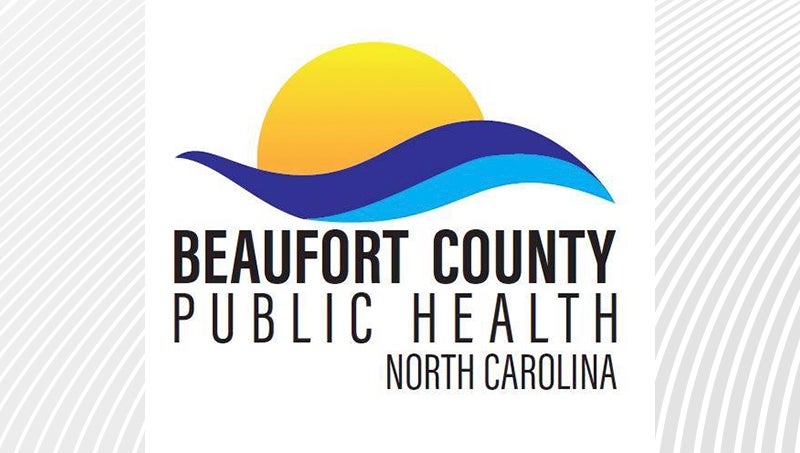Efforts under way to address pedestrian fatalities
Published 6:53 pm Friday, April 14, 2017

- FATALITY: Paramedics place a pedestrian struck by a vehicle March 16 on North Market Street Extension into a Vidant EastCare helicopter. The man died later. (Vail Stewart Rumley/Daily News)
Since the beginning of this year, three pedestrians have been struck by vehicles and killed in Beaufort County. The county may be part of a nationwide trend — increasing pedestrian deaths.
That’s something local and state officials want to prevent.
A week ago, Kenneth Scipio, 33, was in the road in front of his house when he was struck about 4 p.m. by a mini-van headed north on U.S. Highway 17 about a mile north of its intersection with VOA Road. Eighty-nine-year-old Jake Rogers was struck on Market Street Extension in mid-March, and 59-year-old Hope Moore was struck on West 15th Street in early March. The Moore death was the result of a hit-and-run driver.
To help reduce pedestrian fatalities, the Washington Police Department is participating for 10 days in the Speed a Little, Lose a Lot campaign that began Thursday and ends April 23. The campaign is a joint effort by the N.C. Governor’s Highway Safety Program and the N.C. Department of Transportation to reduce the number of speed-related traffic fatalities.
Speed is not the major cause of vehicle collisions in Washington, according to Stacy Drakeford, the city’s director of police and fire services. In an email, Drakeford addressed the pedestrian-fatalities issue.
“The way to address this problem is through education. Pedestrians and Drivers must understand and act accordingly to the North Carolina General Statutes in relations to Crosswalks and intersections. … (P)edestrians are required to follow all traffic laws. Sometimes pedestrians forget about: When crossing the road at any point other than a crosswalk, a pedestrian must yield the right of way to all vehicles; When walking along or upon a highway, a pedestrian must yield the right of way to all vehicles; A pedestrian must keep a lookout for vehicles before and while crossing a highway; A pedestrian must walk facing traffic on roads where there is no sidewalk, it is illegal to walk on the road if a sidewalk is available; A pedestrian is legally bound to obey traffic control signals,” Drakeford wrote.
What’s caused this rash of pedestrians being killed by vehicles?
According to analysis of preliminary data, pedestrian deaths in North Carolina during 2016 were significantly higher than in 2015, increasing by 24 percent. Distracted driving is one reason for that increase, but that is difficult to confirm, according to a Charlotte Observer report. That report, in part, is based on information from the Governors Highway Safety Association.
“Pedestrians and drivers are often distracted by music or phones while they are walking, jogging or driving. This distraction is the often cause of vehicle collisions,” according to Drakeford. “When driving, drivers need to be aware of their surroundings to respond to any potential sudden event that may occur. Pedestrians or joggers should take the precaution of wearing bright or reflective clothing.”
State agencies are working to decrease pedestrian fatalities.
“Educationally, what we’re trying to do we do have troopers that go across the state that push educational talks to different civic groups, high schools and so forth,” said Sgt. Michael Baker, public-information officer with the N.C. Highway Patrol.
The Highway Patrol participates in the N.C. Department of Transportation’s Watch For Me NC program, Baker noted. Washington does not participate in the program, but Greenville and New Bern do.
Watch For Me NC is a comprehensive program, run by DOT in partnership with local communities, aimed at reducing the number of pedestrians and bicyclists hit and injured in crashes with vehicles. It uses two key elements: 1) safety and educational messages directed toward drivers, pedestrians and bicyclists and 2) enforcement efforts by area police to crack down on some of the violations of traffic safety laws.
“Each year more than 2,400 pedestrians and 960 bicyclists are hit by vehicles in North Carolina, making North Carolina one of the least safe states in the US for walking and bicycling. On average, about 160 pedestrians and 20 bicyclists are killed each year in the State, representing about 15% of all traffic fatalities that occur on North Carolina roads. In collisions with cars, pedestrians in particular have a lot to lose. Those hit at 40 mph have an 85 percent chance of dying,” according to the Watch For Me NC website.
In the first six months of 2015, North Carolina had 77 pedestrian fatalities, increasing to 96 pedestrian deaths in the first six months of 2016, according to GHSA.
“After adjusting for anticipated underreporting in the preliminary state data, GHSA estimates the number of pedestrians killed (nationwide) in 2016 increased by 11 percent compared with 2015. This was the largest annual increase in both the number and percentage of pedestrian fatalities in the 40 years that national records have been kept, with the second largest increase occurring in 2015. In addition, pedestrian deaths as a percent of total motor vehicle crash deaths have increased steadily, from 11 percent in 2006 to 15 percent in 2015,” reads a GHSA report.
The report also noted: “About 6,000 pedestrian fatalities are estimated to have occurred in 2016, which could make 2016 the first year in more than two decades with more than 6,000 pedestrian deaths.”
According to GHSA data, 34 of the 50 states had increases in pedestrian deaths from 2015 to 2016, 15 states had decreases and one state, Maine, was unchanged.
GHSA reports that while several contributing factors result in pedestrian deaths, a more recent contributing factor may be the rapidly growing use of smart phones to access wireless data while walking and driving, which can be a significant source of distraction for both pedestrians and motorists.






